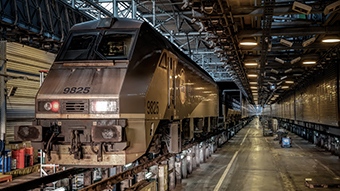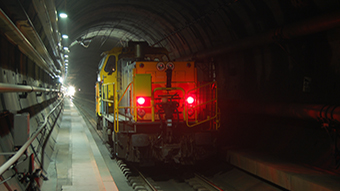Investments to guarantee the safety of the infrastructure
Maintenance
Eurotunnel is pursuing an active approach to optimise the availability, performance and reliability of the Channel Tunnel infrastructure and the rolling stock.
Reliability, safety, availability
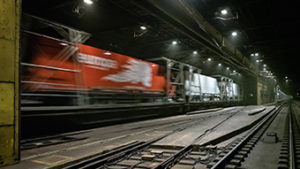
It is a daily challenge to ensure the faultless maintenance of an infrastructure as complex as the Channel Tunnel and of rolling stock handling the world’s highest density of traffic, while minimising costs and downtimes. It also represents a wonderful incentive to invent and digitalise new processes and tools: a sophisticated transport system and the world’s number one road-rail link, the cross-Channel Fixed Link is still at the cutting edge of technology, 30 years after construction began.
As well as being the world’s longest undersea railway tunnel, the Eurotunnel network is also setting records in terms of its operations. 4000 trains run each day in average through the Tunnel, representing one train every 4 minutes at peak times. The Truck Shuttles carry up to 32 heavy goods vehicles of 44 tonnes, some of the shuttles can weigh up to 2,500 tonnes. The Passenger Shuttles can transport up to 120 cars and 12 coaches. During the crossing in the Tunnel, these 800-metre long Shuttles run at 120 kph and Eurostar trains at 140 kph.
Such an activity requires a major equipment maintenance effort. Keeping the infrastructure and facilities in excellent condition to meet the highest reliability and safety standards, at a cost respecting the company’s profitability targets, represents a challenge not only at a technological and economic level, but also in terms of organisation.
The main goal is to optimise the availability of facilities and equipment, anticipating breakdowns and devising solutions so that the infrastructures can be maintained with minimal disruption to traffic.
A recognised expertise and innovation
With the built-up experience and the implementation of many innovations, the group has become a globally recognized in railway maintenance. Many rail infrastructure managers and operators, as well as professionals from other business sectors, regularly visit our workshops. Eurotunnel willingly shares its know-how in this area.
Eurotunnel is also member of the i-trans competitive pole and and cooperates with various industrial and scientific organizations in the region (Corus, RailTech, Sculfort, Outreau Technologies, RFF, Ecole des Mines de Douai, INSA-Lyon) on 4 different topics: the future materials and geometries for extending rail life, new welding, and the tracks of tomorrow. In July 2018, Eurotunnel renewed its Chair in “Railway transport Science” with the French Grand Ecole, the Ecole des Ponts ParisTech, which has already led to innovation and the patenting of an exceptional engineering equipment for the track maintenance in the Channel Tunnel.
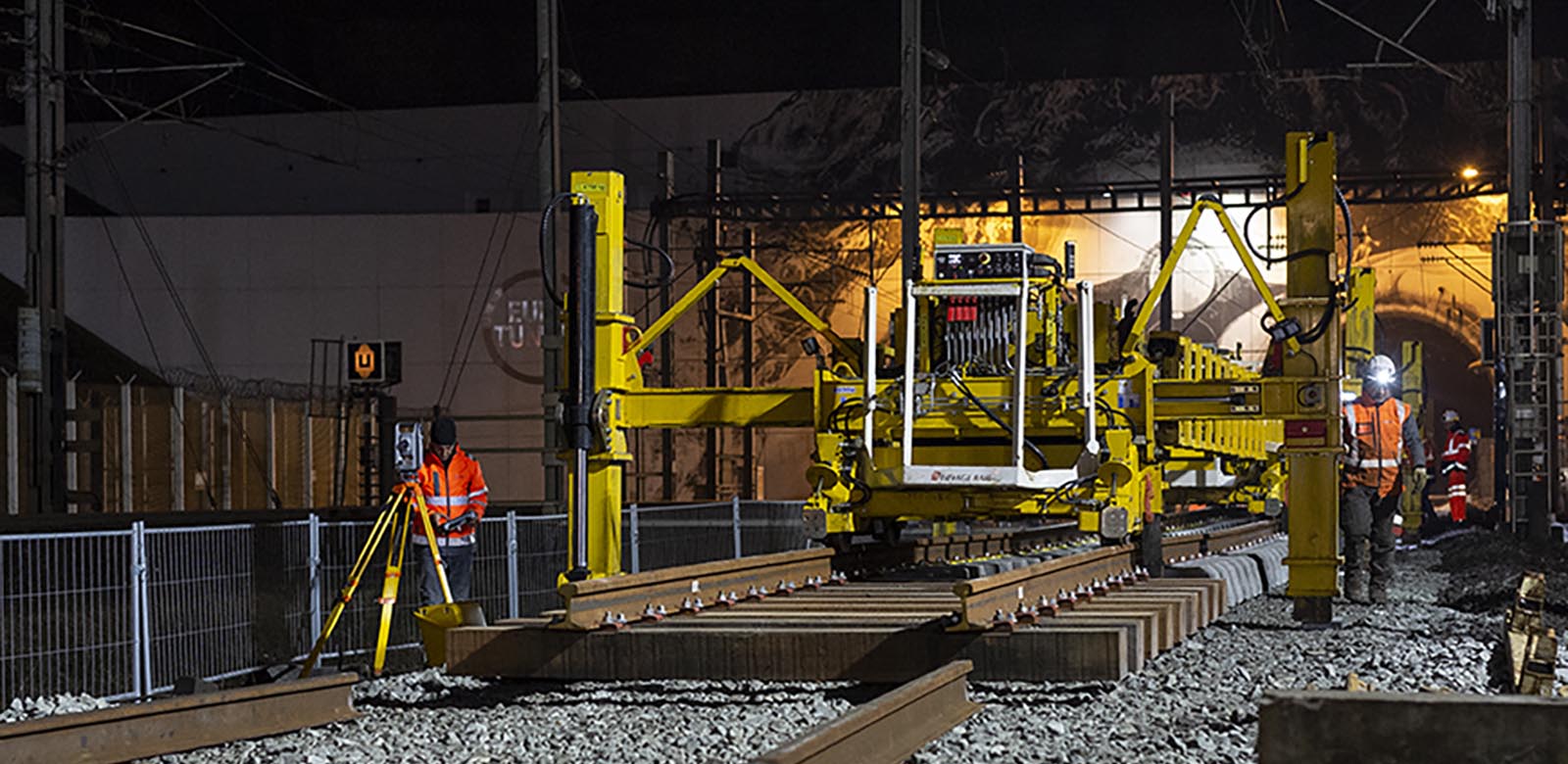
- In January 2020 in Coquelles, Eurotunnel’s maintenance team carried out a real technical achievement by replacing, at the portal of the North Tunnel in France, some rails and points of over 222 metres in length and within 24 hours. These rails have supported 3 billion of tonnes of traffic since 1994. A hundred French and British Eurotunnel technicians were mobilised and heavy machinery used to remove the existing equipment, move and lift these 100 tonnes of track, position the rails, distribute and pack 800 tonnes of ballast under some 350 railway sleepers. While works were taking place, the South Tunnel remained open to enable our Le Shuttle and Freight customers and those on Eurostar to cross the Channel.
- In early summer 2021 in Folkestone, a similar operation was carried out in front of the UK Tunnel portal in 60 hours with the replacement of three sets of points, 500m of rail and 1,900 tonnes of ballast. As part of the Group’s environmental strategy, and in particular the management and recovery of waste, the old materials were recycled or used elsewhere on the sites or kept as spare parts.
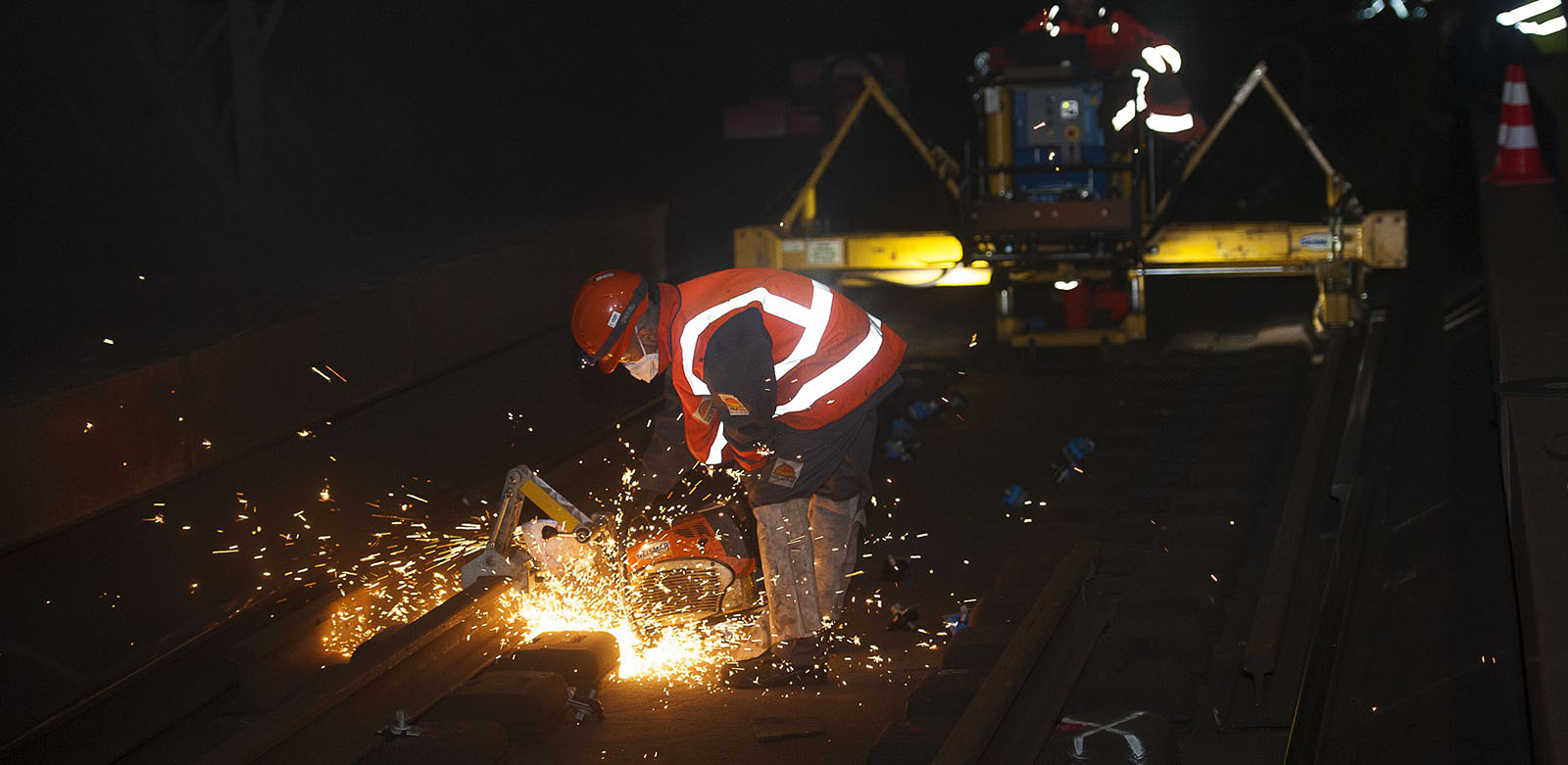
The campaign to replace the rails in the Tunnel began at the start of 2022 for a period of 3 years and followed the complete overhaul of the ventilation systems completed in 2021.
New partnership to affirm long-term maintenance outlook
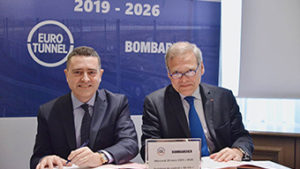
As part of the 2018-2026 mid-life programme, Eurotunnel is signing a contract with Bombardier Transportation to renovate nine “PAX” Shuttles. Composed in total of 254 wagons, each 800-meter long Shuttle is made up for passengers’ vehicles with passengers remaining in their vehicles during the 35-minute Channel crossing. In the 25-year period since the opening of the Channel Tunnel, these Shuttles have each travelled an average of 300 round trips per month and have enabled over 236 million passengers to travel very comfortably between France and Great Britain.
Eurotunnel has chosen to put its trust in Bombardier Transportation for the renovation of its Passenger Shuttles. We are celebrating 25 years of operation of these unique Shuttles that were built 30 years ago. This strategic investment, our most important in 25 years, allows Eurotunnel to maintain the highest level of quality service and to affirm trust in its long-term perspectives.
Innovation and digitalisation
Getlink is investing across all business activities to get ready for tomorrow's mobility.
The Channel Tunnel
Focus on the Tunnel's infrastructure and equipments.
Rolling stock
Eurotunnel's Passenger and Truck Shuttles are unique in the world and its locomotives are the most powerful in Europe.



